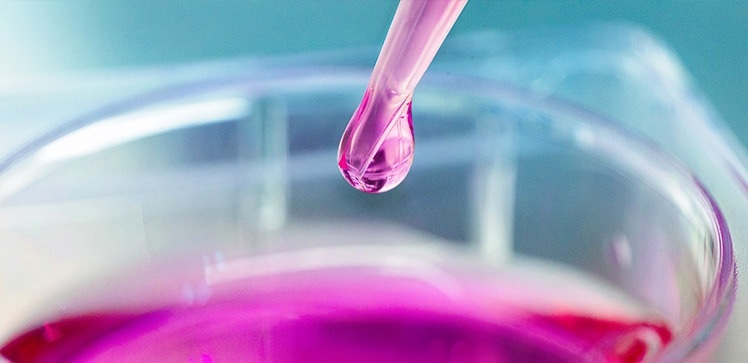Two proteins help in protecting and stabilizing RNA as it travels through the cell carrying muscle-forming code. Studying this RNA-stabilizing complex further may have ramifications for muscle recovery and disease treatment.
 A protein complex that is crucial for messenger RNA stability during muscle-fiber formation has been identified by KAUST bioscientists. Image Credit: © 2023 KAUST; Anastasia Serin.
A protein complex that is crucial for messenger RNA stability during muscle-fiber formation has been identified by KAUST bioscientists. Image Credit: © 2023 KAUST; Anastasia Serin.
The fragile molecule, RNA, serves as a go-between, transporting genetic code duplicated from DNA into protein-making factories in the cell, where the code is translated to form the various tiny components that make humans who they are.
But RNA is no longer merely seen as a passive intermediate conduit. It acts as a regulatory checkpoint, essential to the normal function of all biological processes.”
Brenda Janice Sánchez, Biochemist, Smart-Health Initiative, King Abdullah University of Science and Technology
This implies that different aspects of the cellular machinery must collaborate to keep these messenger RNAs moving and, eventually, to guarantee their translation into protein at their final destination. Protein synthesis will be severely impacted if any part of this process is disrupted, leading to abnormal cell behavior or even death.
Janice Sánchez and co-workers from KAUST and McGill University in Canada have discovered a protein complex that is essential for messenger RNA stability during muscle fiber formation. Human antigen R (HuR) and Y-Box binding protein 1 (YB1) comprise the complex.
The exact roles of each protein in this stabilization process are still unknown. However, more research into the specifics of how it all performs could help researchers influence the amount and types of proteins made in muscle and other tissues at any given time.
What if we could promote HuR association to YB1 during muscle recovery therapy? Could this lead to more or better muscle fibers? Learning how to control RNA turnover during muscle-fiber formation could have immense repercussions in the development of novel therapeutics that prevent muscle-related pathologies.”
Brenda Janice Sánchez, Biochemist, Smart-Health Initiative, King Abdullah University of Science and Technology
Researchers already noticed that HuR is involved in the stabilization of messenger RNAs with unique nitrogenous base sequences in their untranslated regions, known as AU-rich elements.
HuR, on the other hand, has multiple and sometimes contradictory functions, as it can encourage messenger RNA decay. Janice Sanchez and the group were directed by KAUST bioscientist Imed-Eddine Gallouzi to discover the protein network that might be involved in ensuring HuR’s ability to stabilize messenger RNA, particularly during muscle-fiber formation.
Researchers accomplished this by isolating HuR from precursor mouse muscle cells (called myoblasts) and then identifying the proteins attached to it using mass spectrometry. YB1 was chosen because it is also involved in messenger RNA stabilization and binding.
The researchers then turned off the gene that codes for YB1 in myoblasts, which greatly reduced their ability to mature into muscle cells. In addition, when genes in normal myoblasts were targeted to produce more HuR, muscle fiber formation was increased.
This did not occur in myoblasts that had the YB1 protein turned off. Further research revealed that HuR and YB1 form a complex that adheres to the AU-rich element in messenger RNAs to stabilize them during muscle fiber formation.
Establishing the network of RNA-binding proteins that interact with HuR, as well as dissecting the mechanism through which these complexes are involved in vital processes such as muscle-fiber formation will be paramount in our understanding of the central dogma of molecular biology, from when code is transcribed on to RNA from DNA, to when it is translated into proteins. Our study shows that the affinity of HuR for its RNA target is directly influenced by the RNA-binding protein it associates with.”
Imed-Eddine Gallouzi, Bioscientist, King Abdullah University of Science and Technology
RNA: Don't kill the messenger
Learn how KAUST bioscientists are revealing previously unknown details about RNA. Video Credit: © 2023 KAUST; Anastasia Serin.
Source:
Journal reference:
Sánchez, B. J., et al. (2023) The formation of HuR/YB1 complex is required for the stabilization of target mRNA to promote myogenesis. Nucleic Acids Research. doi.org/10.1093/nar/gkac1245.